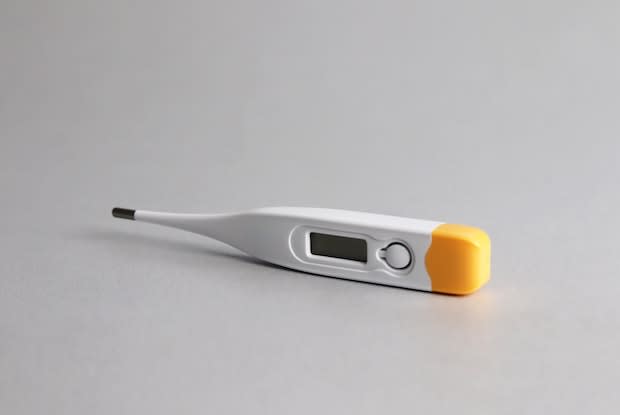Table of Contents
II. Irritable Bowel Syndrome (IBS)
What Does "Motility" Mean?
Intestinal issues can wreak havoc on a person’s everyday life. “Motility” is a word used to describe the contraction of the muscles that propel and mix contents in the gastrointestinal (GI) tract. The GI tract is a complicated system with four distinct parts separated by sphincter muscles. [1] The parts of the stomach involved in digestion include the:
Esophagus: Carries food to the stomach
Stomach: Mixes food with digestive enzymes and grinds it down to a liquid
Small Intestine: Absorbs nutrients
Colon: Eliminates indigestible food residues and reabsorbs water
All of these regions have a specific function that allows the intestines to work properly. When something goes wrong in these complicated processes, uncomfortable and painful symptoms can occur. Several types of motility disorders may affect the GI tract. Many of these disorders can be treated with medications like Motilium (domperidone), which increases the movement of the GI tract. Read on to learn more about the signs and symptoms of intestinal motility disorders. [2]
Get savings updates for Motilium
Irritable Bowel Syndrome (IBS)
IBS is common and affects many people. In the United States alone, IBS affects 25-45 million people. Around 2 in 3 IBS sufferers are women, and 1 in 3 IBS sufferers are male. Irritable bowel syndrome can affect anyone of any age, even children. [3] Motility disorders result in nausea, diarrhea, and constipation, which are all symptoms that are closely connected to IBS.

Irritable bowel syndrome is a “functional” digestive condition. This means that this disorder affects how the digestive system works, but does not damage the organs. If you live with IBS, then your GI tract is either moving too fast or too slow, which can result in diarrhea or constipation. Pain can also occur when the intestinal muscles are moving abnormally. [1] Some other symptoms of IBS can include:
- Excess gas
- Mucus in the stool
- Cramping or bloating that is semi-relieved by passing a bowel movement
- Rectal bleeding
- Weight loss [4]
Gastroparesis
This type of motility disorder occurs when the stomach cannot empty itself of food properly. Gastroparesis is most common in those who have had diabetes for a long time. Long-term diabetes can cause a malfunction in the vagus nerve, responsible for the functioning of muscles in the esophagus, stomach, gallbladder, pancreas, and small intestine. These muscles perform peristalsis (propelling muscle movements) in the digestive tract. Peristalsis occurs in waves and pushes food through the stomach. In the case of gastroparesis, this is not occurring normally and, therefore, prevents food from moving from the stomach to the intestines. Symptoms of gastroparesis can include:
- Heartburn
- Vomiting undigested food
- Abdominal bloating
- Feeling full quickly when eating
- Poor blood sugar control
- Nausea
It is essential to get proper treatment for gastroparesis because it can lead to the growth of bacteria in the stomach, resulting in infections. If food does not completely leave the GI tract, then a solid food mass can harden in the intestines and create a bezoar. Bezoars can cause dangerous blockages in the stomach. People with diabetes and gastroparesis may also have a hard time controlling their blood glucose levels. Doctors may prescribe Motilium to improve symptoms of gastroparesis, especially nausea. [5]

Esophageal Spasms
As the name suggests, esophageal spasms describe issues with the esophagus. The exact cause of esophageal spasms is unknown, but researchers believe it may be a result of malfunctioning nerves in the swallowing muscles. In normal esophageal processes, the esophagus moves food into the stomach through coordinated muscle contractions. When this function is disrupted, spasms can occur.
Esophageal spasms feel like sudden chest pains that can last for a few minutes up to several hours. These spasms may occur occasionally and not require treatment. If the spasms become severe, then food and liquids may be unable to travel through the esophagus. Symptoms of esophageal spasms can include:
- Difficulty swallowing certain liquids (especially red wine, cold, or hot liquids)
- A feeling that an object is stuck in your throat
- Squeezing pain in the chest (maybe misinterpreted as heart pain or angina)
- Regurgitation of food and liquids back up the esophagus
This is a fairly rare condition and is more common in older adults between the ages of 60 and 80. High blood pressure, anxiety, and depression may increase your risk of developing esophageal spasms. [6]
Hirschsprung’s Disease
Hirschsprung’s disease is a congenital condition. Children are born with missing nerve cells (ganglion cells) within the colon or rectum wall. An absence of these nerves can result in motility problems because the ganglion cells are responsible for peristalsis, or wave-like motions of the bowel. This condition can result in obstructions in the bowel. This disease is often hereditary.
Those with Hirschsprung’s are typically diagnosed a few days after birth. Parents may notice something amiss if the newborn does not pass its first bowel movement (meconium). Other symptoms may include:
- Vomiting
- Abdominal distention as a newborn
- Chronic constipation
- Watery stools
- Lack of appetite
- Diarrhea, fever, and distention (these symptoms are rarer)
Typically, surgery is the only successful treatment option for Hirschsprung’s disease. The surgery involves removing the abnormal bowel and attaching a normal bowel to the anus. Most people respond positively to this surgery, but around 10-20 percent of people experience continued GI problems. [7]

Scleroderma
Scleroderma is an autoimmune disease that often results in gastrointestinal problems. This rare disease involves a hardening and tightening of the skin and connective tissues. Scleroderma occurs as a result of an overproduction of collagen in the body tissues. Scleroderma may only affect the skin, but it can damage the blood vessels, internal organs, and digestive tract in more severe cases. [8]
Intestinal motility disorders can occur with scleroderma due to smooth muscle loss and fibrosis (scar tissue) formation in the GI tract. If these structures become present in the GI tract, then delayed food transit may occur. In the case of the digestive system, scleroderma can cause a variety of uncomfortable symptoms, including:
- Acid reflux
- Upper abdominal pain
- Bloating
- Vomiting
- Nausea
- Weight loss
- Poor quality of life [9]
Achalasia
Achalasia is a serious condition that affects the esophagus’ ability to carry food from the throat to the stomach. Achalasia affects the function of the lower esophageal sphincter (LES). This is a muscular ring that closes off the esophagus from the stomach. In the case of achalasia, the LES fails to open up during swallowing and leads to a backup of food within the esophagus. This is usually a result of damaged nerves in the esophagus or damage to the LES.
Achalasia typically occurs later in life and is often hereditary. You are at a higher risk for achalasia if you have an autoimmune disorder. A rare parasitic infection (Chagas’ disease) may also result in achalasia, but it occurs mostly in South America. Symptoms of achalasia can include:
- Pain or discomfort in the chest
- Intense pain after eating
- Weight loss
- Heartburn [10]
The long-term outlook or achalasia can vary. Esophageal dilation surgery is often a successful treatment option. This surgery involves inserting a tube down the throat and inflating an air-filled balloon that disrupts the lower esophageal sphincter’s muscle fibers. This will expand the sphincter, making it easier for food to move from the throat to the stomach. [11]
The content in this article is intended for informational purposes only. This website does not provide medical advice. In all circumstances, you should always seek the advice of your physician and/or other qualified health professionals(s) for drug, medical condition, or treatment advice. The content provided on this website is not a substitute for professional medical advice, diagnosis or treatment.
